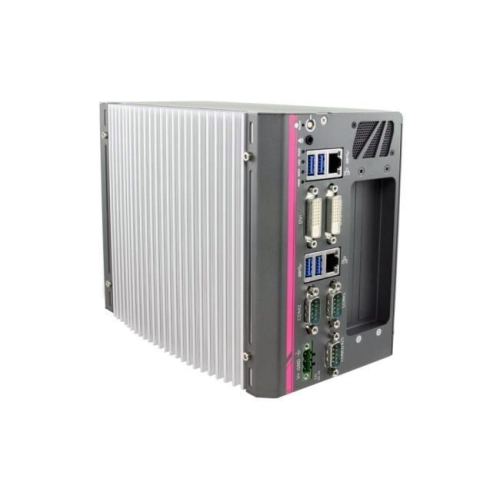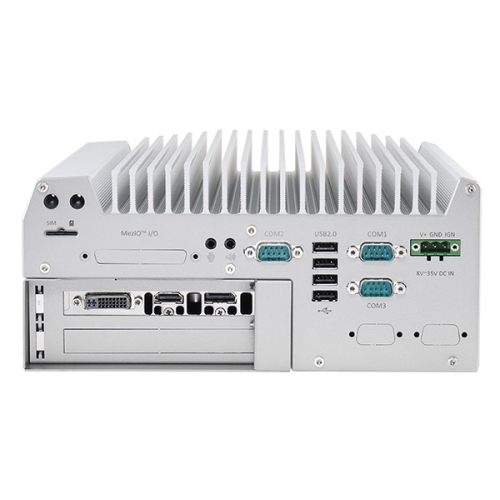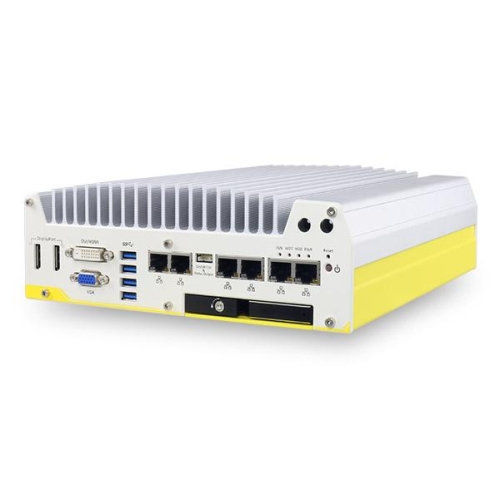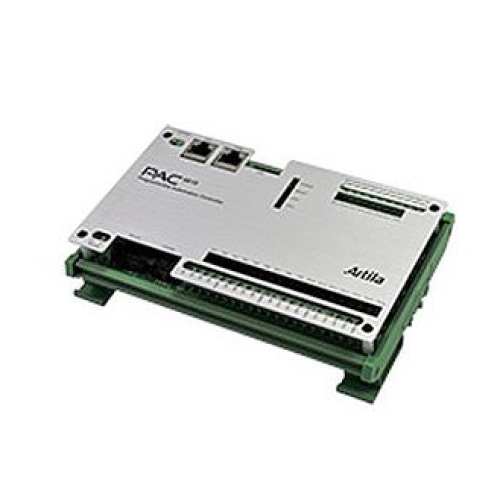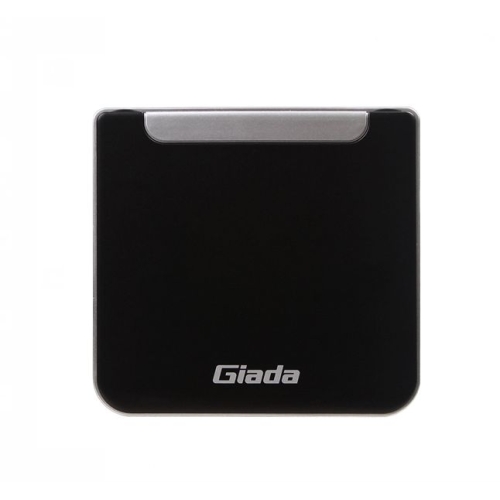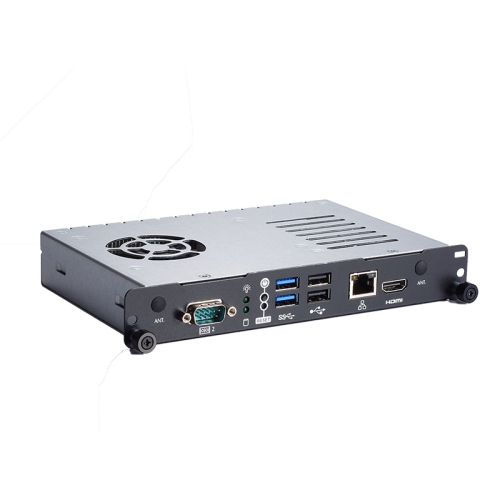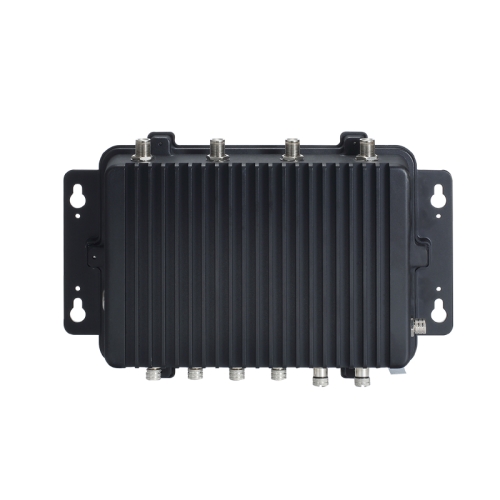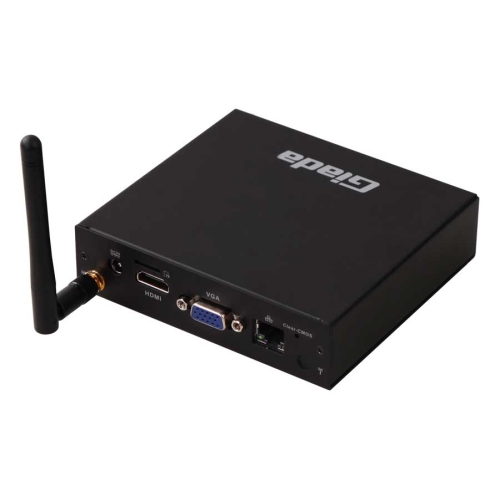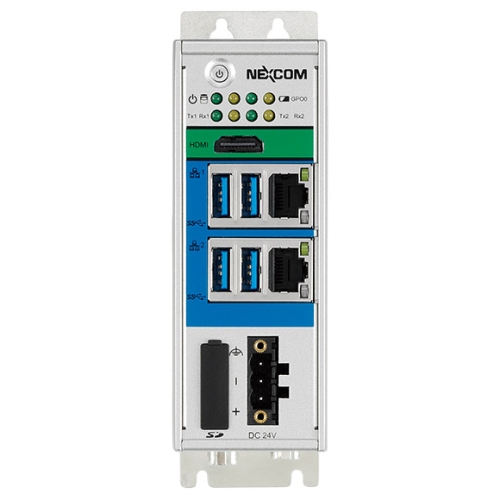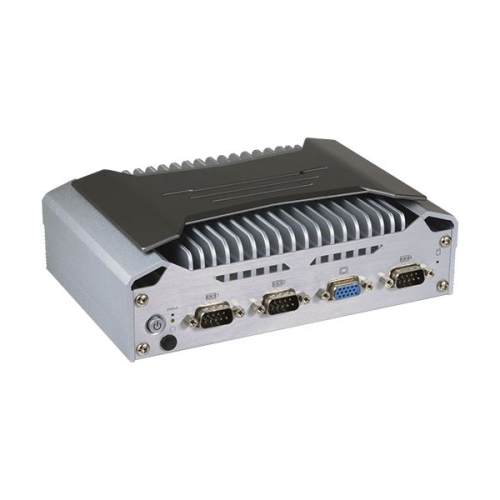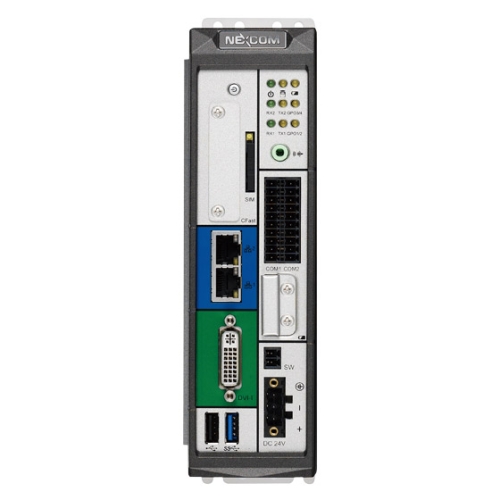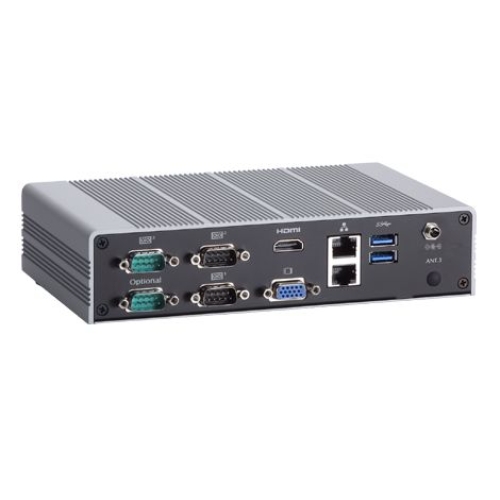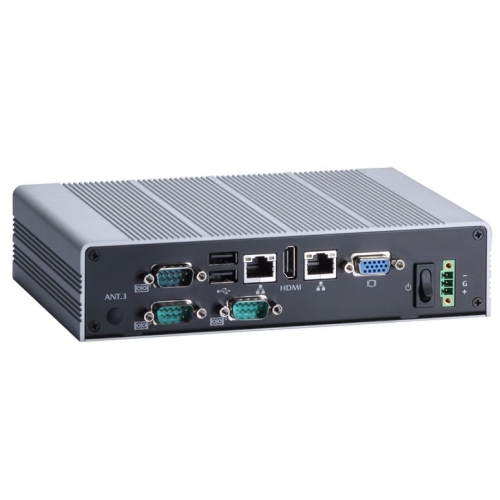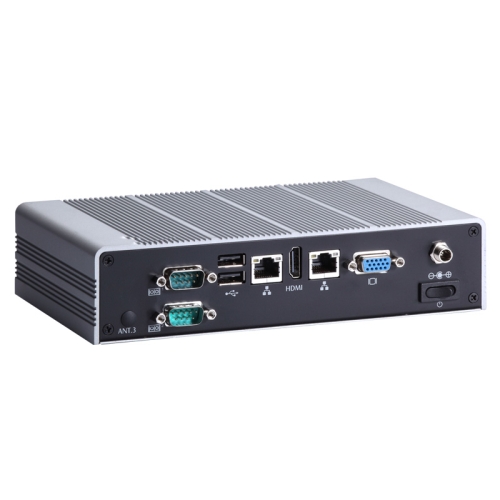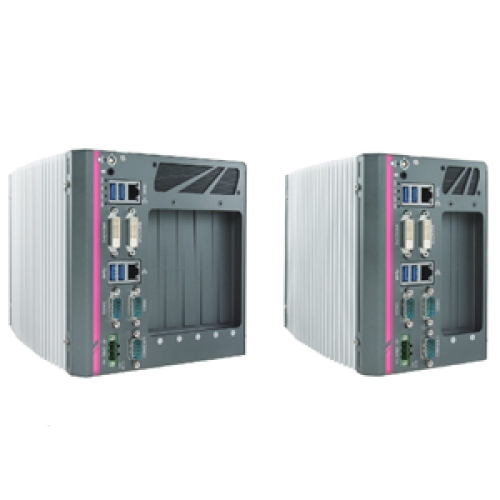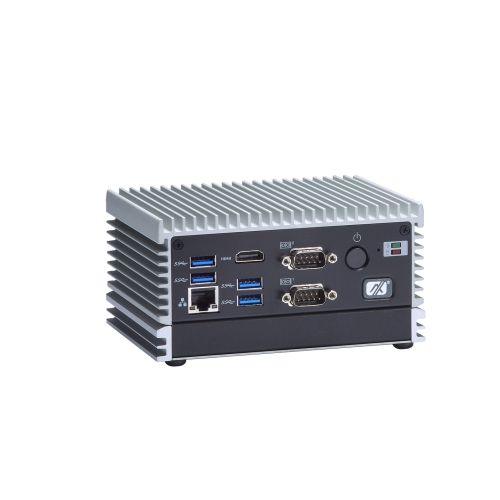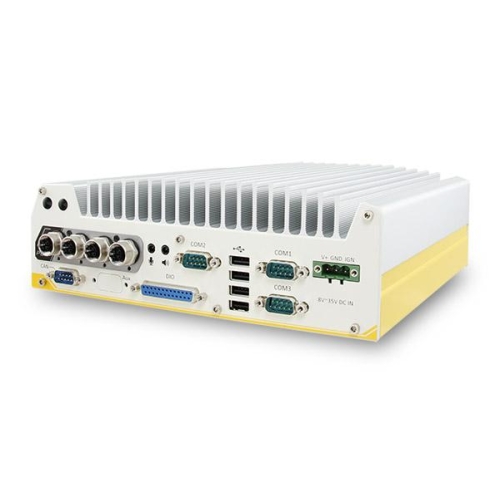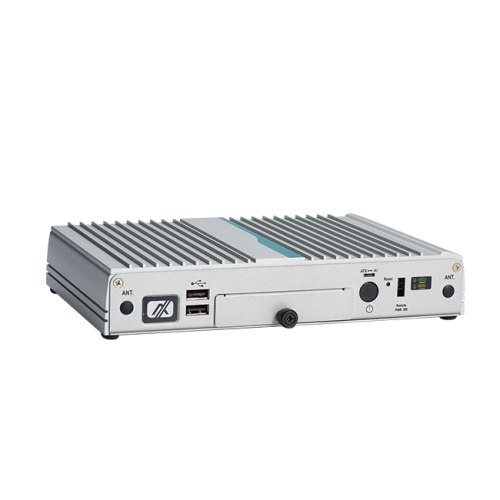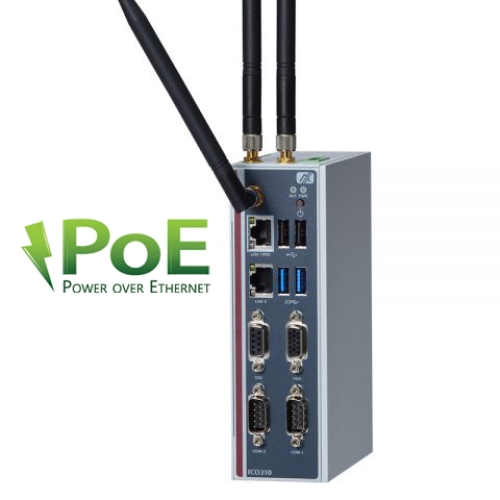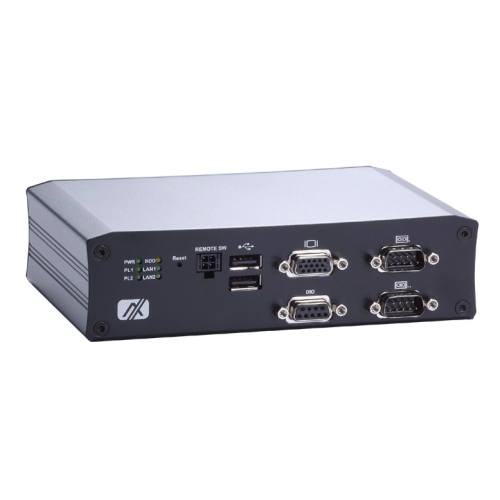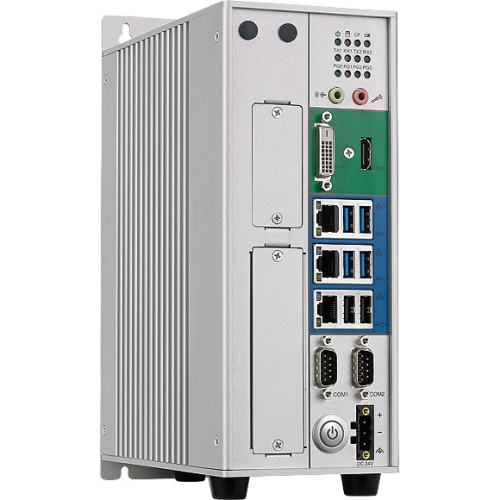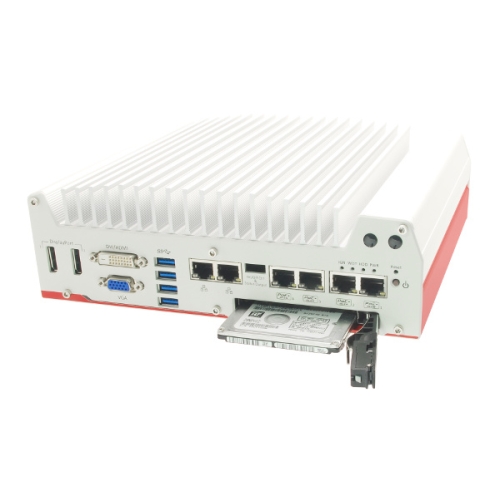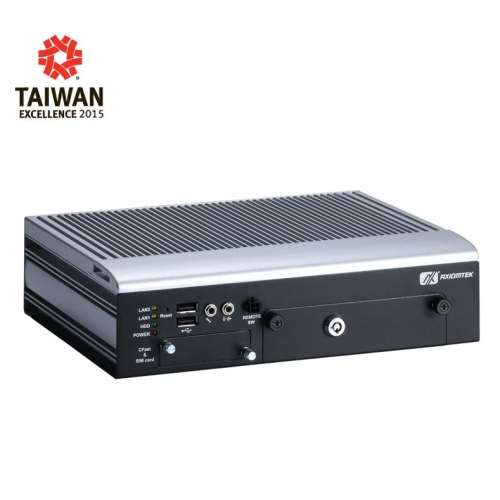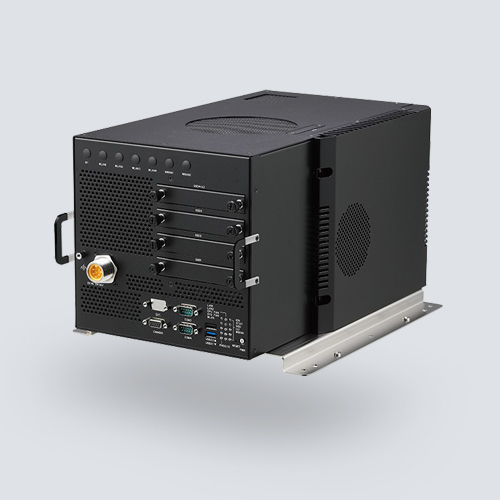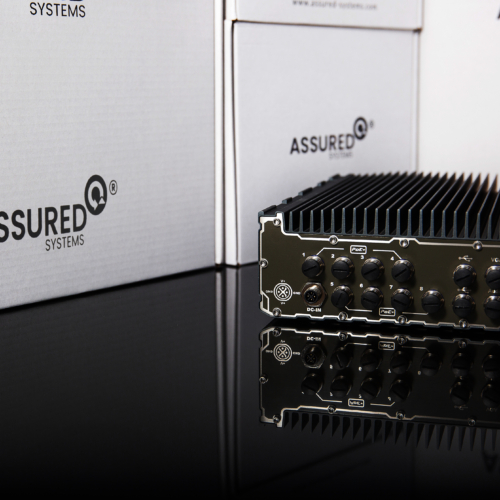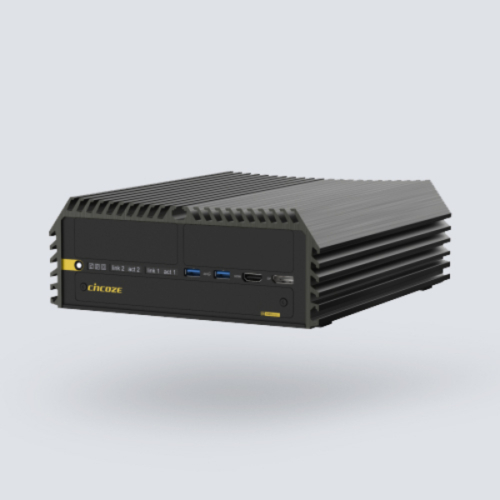Our Guide to Embedded Computers
Embedded computers have transformed the way we live and work. Small yet powerful, these systems are often purpose-built to deliver a set of predetermined functions when integrated within a larger system or machine. Functions may include controlling processes, managing data, or enabling communication.
Unlike personal computers, embedded computers are designed specifically to carry out a single function, it’s this concept which renders them highly efficient, cost effective and reliable. Read on to learn more about how embedded computer systems work and how to choose the right type for your application.
What are Embedded Computers?
You might be researching ‘what is an embedded computer’ because you’ve been having problems with consumer-grade tower PCs or small form factor units and have been recommended to replace your infrastructure with embedded solutions that are more fit for purpose. Embedded computers are often referred to by many names including Fanless Box PCs, Single Board Computers, Vehicle Controllers, Industrial PCs and so on.
In simple terms, an embedded computer is a computer system that has been designed to perform specific tasks within a larger device or system. They are typically self-contained, meaning they don’t require any external components such as keyboards and monitors. Instead, these devices use special hardware and software to operate without the need for user input. Despite their small size, and low power consumption, embedded computers provide powerful computing capabilities with dedicated processors, memory, I/O ports, communication interfaces and more.
What Are Embedded Computers Used For?
The applications for embedded computers are growing rapidly due to their ability to perform specialised tasks with minimal power consumption and cost. They provide a wide range of vital services from controlling machinery and data acquisition to communication with other systems. From everyday consumer products to industrial automation applications and other specialised fields, embedded computers work hard to silently power our everyday lives.
Examples of Embedded Computers
In the domestic space, embedded computer systems can be found in a variety of everyday items such as traffic light systems, CCTV solutions, digital signage controllers, epos systems and kiosks. These embedded computers allow these solutions to offer advanced features, such as internet connectivity and automated scheduling.
Industrial Automation
In the industrial sector, embedded computers are utilised in a vast range of ways. In the field of factory automation, embedded computers are utilised to control production processes, monitoring systems, and robotics. Such systems are also becoming increasingly important in the healthcare sector as they provide reliable, secure and high-performance computing capabilities needed for various applications such as enabling us to monitor vital signs, assist in medical treatments, provide remote diagnosis, and other medical equipment that requires accurate data processing. To ensure the safety and reliability of these embedded computers, manufacturers must obtain certifications such as ISO 13485 or IEC 60601 to guarantee that their medical grade computer systems meet all quality requirements set by regulatory bodies. Manufacturers such as Axiomtek, Arbor Technology, AValue, Winmate and many more provide a range of Certified Embedded Computers and Certified Panel PCs.
Renewable Energy Sources
Embedded computers are playing a key role in the advances in the renewable energy sector, as they can control and monitor a range of processes to maximise efficiency. For example, by using embedded computers, it is possible to monitor solar panels and wind turbines, ensuring that they are working properly and efficiently. They can also be used to automate various tasks such as adjusting the angle of the solar panel or turbine blades for maximum power output. As a result, embedded computers have the potential to reduce costs associated with energy production while also increasing reliability and performance. Manufacturers such as Neousys, ASRock, AAEON, Cincoze offer a range of systems that can be engineered for use within the energy sector such as DIN Rail Computers and Industrial Panel PCs.
Military Embedded Computers
Embedded computers are an integral part of many military systems and applications, from weapons control systems to communications networks they can provide an efficient way for soldiers to interact with their environment whilst ensuring data accuracy and security. For these embedded computers to be used by the military they must meet certification requirements needed in a secure military environment. The most common requirement is MIL-STD-810G which covers environmental engineering considerations such as temperature extremes, humidity levels, shock resistance, vibration tolerance and electromagnetic compatibility (EMC). Other certifications may also include protection against tampering or malicious hacking attempts. By meeting these stringent requirements, embedded computers can provide valuable services to the armed forces without compromising security or reliability. With manufacturers such as Winmate, Arbor Technology, Cincoze and Neousys, embedded computer engineers are able to deliver complex military computing solutions for use in many military applications.
Railway Certified Embedded Computers
Embedded computers have revolutionised railway applications in recent years, providing a range of benefits that can make rail travel safer, more efficient and cost-effective. They provide sophisticated analytics that help operators identify problems and optimise performance, as well as enabling enhanced communication between components such as sensors and controllers for improved reliability. Furthermore, these powerful devices can reduce maintenance costs while also helping to increase safety margins for passengers and staff alike. However, for them to work effectively on rail networks, embedded computers need certain certifications in place that can guarantee their suitability for use. One such certification is EN50155, which sets the standard for embedded computer systems used in rolling stock and other rail applications. This comprehensive set of requirements helps to ensure that computers are suitable for use in potentially harsh environments, including extreme temperatures and vibration levels. Additionally, it covers various performance parameters such as power management and fault tolerance to provide maximum reliability while also guaranteeing compatibility with other components on the network. By adhering to this rigorous standard, manufacturers can be confident their products meet the highest safety and quality standards when used in railway applications.
Another certification is EN 45545 which is a European standard that specifies the requirements for fire protection on railway vehicles. It was developed to ensure that all railway vehicles comply with the same safety standards and provide a safe environment for passengers, crew members and other personnel in the event of an emergency. The standard covers areas such as interior materials, structures, electrical equipment, cabins, windows, and external surfaces. It also includes specific tests to evaluate how well these components can withstand flames or heat. EN 45545 ensures that all trains are designed with sufficient fire protection measures so they can be evacuated quickly if necessary. By having this common European standard applied throughout Europe it makes sure that there is no risk of inadequate protection due to differences between countries’ regulations or manufacturers’ implementations of their own standards.
AI Systems
AI (Artificial Intelligence) is transforming the way machines interact with their environment and making our lives easier and more efficient than ever before. Embedded AI computers are one of the most important tools in this transformation, allowing for powerful processors and machine learning algorithms to be combined into a small device which can process substantial amounts of data quickly and accurately. NVIDIA Jetson is an example of this, enabling developers to create, train and deploy machine learning models on edge devices with unprecedented efficiency. With its advanced processor architecture and software stack featuring frameworks, it is no wonder that NVIDIA Jetson is transforming many industries by automating processes that were previously done manually or not at all.
As technology continues to evolve, embedded computers are now essential for a variety of industries and applications, enabling them to function efficiently and reliably.
What are the Main Types of Embedded Computers?
Although embedded computers are highly customisable, fundamentally they can be categorised into four main types based on function:
1. General-Purpose Embedded Computers
General-purpose embedded computers are used to provide basic computing power to devices. These computers are typically less powerful than stand-alone systems, but they deliver the necessary CPU, memory, and other components needed to drive the device’s functionality. Common examples include smart TVs and home automation systems.
2. Stand-Alone Embedded Computers
Stand-alone embedded computers are designed to operate independently of external systems or networks and have dedicated hardware and software resources. Common examples of include industrial robots, medical devices, and military equipment.
3. Real-Time Embedded Computers
Real-time embedded computers are designed for applications that need to respond to a stimulus within a set time frame. The main purpose of these systems is to analyse signals or input and react in real time to changes in the environment or device. Common examples include aircraft flight systems, telecommunications networks, and robotic systems.
4. Networked Embedded Computers
Networked embedded computers are specifically designed to communicate with one another, sending and receiving information over a dedicated network. These types of computers are used to connect multiple embedded devices together, enabling them to work together as one unit. Common examples include building automation systems and security systems.
The Benefits of Using an Embedded Computer
Embedded computer systems offer numerous advantages over traditional consumer-grade computers. Below are the main benefits of using an embedded computer, no matter what the application may be:
Small Form Factor Design
A standout feature of nearly all embedded computers is their compact size and weight. Utilising small form factor motherboards such as Mini-ITX, an embedded computer can be installed, in places where a typical desktop or tower PC would never fit. When designed with flexible mounting options, integration is possible in virtually any position or orientation. If size is one of your most significant constraints, consider Pico-ITX or Single Board Computers.
Fanless Cooling
A potential point of failure when using fan-based technology to cool computers is the build up of particulate matter such as dust. Typical consumer-grade computers have openings in the case and utilise fans to create airflow. This method circulates cooler air over the components within which allows dust to also enter the system. Removing the fan for cooling purposes decreases failure rates, eliminates noise and provides more space for integral parts.
You might be thinking how do embedded computers keep cool? While some embedded computers still utilise fans typically for expansion modules or graphics cards, the majority use thermal pads on the CPU and external heat sink technology to dissipate the heat given off from core components such as the processor. All heat-generating components are segregated evenly on the PCB to avoid heat-soak. Embedded computer cases also use an external heat sink design either on top or down the side to further help dissipate built up heat from components. These passive cooling techniques allow many industrial computers to remain sealed against the elements (and can be IP65 rated) while still effectively dissipating heat without the need for fans.
Low Maintenance & Reliability
Embedded computers are normally required to run 24/7 and must also withstand factors present in demanding applications. Therefore reliability and robustness are critical. For example, if you deploy a consumer-grade PC with moving parts in a vibration prone environment, you can expect components such as the hard drive to fail. Embedded computer manufacturers on the other hand design and manufacture the hardware to meet specific criteria and certification rendering them extremely low maintenance, more reliable and rugged than more general-purpose computers.
In fact, wide temperature components are often used to tackle operating temperature ranges wider than 0-60C and conformal coatings can also be applied upon request to protect the system against moisture, dust, corrosion and electrical or thermal conduction
Long-term Availability
Another key benefit of using an embedded computer is the life cycle support of the technology. Unless specifically stated by the manufacturer, most consumer grade computers offer a very limited procurement life cycle. They are typically subject to discontinuation in six to twelve months which poses a big problem for embedded and industrial applications. Unwanted side effects often come when computer components change. Software that was proven to work on one system may not operate correctly on different hardware or operating software. Embedded and industrial computer customers prefer to lock down an operating system image to deploy on all systems in the field. When hardware components change, the operating system image is no longer compatible, and this requires a new software image to be created when hardware changes take place. Managing different software deployments on multiple hardware platforms complicates IT infrastructure, adds cost, labour and is never desirable. With purpose built embedded systems this risk is reduced or removed.
To recap:
General Consumer Grade Desktop Computers are superseded in: 6-12 Months
Apple Mac Mini’s are superseded in: 24-36 Months (typically)
Embedded computers have long term support lasting: 2-12 years (variable depending on model and manufacturer)
Cost Effective
One huge advantage of embedded computers is their cost-effectiveness. Embedded computers are much more affordable than traditional computers, yet they can still provide a comparable level of performance and processing power. This means that businesses don’t have to invest in costly hardware upgrades when they want to upgrade their systems capabilities. Embedded systems also allow users to take advantage of the latest technology without having to worry about compatibility issues.
Security
Embedded computers also offer a much greater security than traditional computers since they are designed to be extremely reliable and difficult to hack into. This makes them great for protecting sensitive data such as customer records or financial information. Additionally, systems can be configured to support a variety of different operating systems without having to replace any hardware.
Overall, embedded computers provide a host of benefits for businesses and individuals alike. Their affordability, versatility, security features, and size make them an invaluable tool in any industry.
How do I Choose an Embedded Computer for my Application?
When selecting an embedded computer for your application, it is important to understand the physical constraints of its surrounding environment. Consider the exact dimensions that are needed to fit in the allotted space, and make sure all necessary ports and power sources can be connected securely. Additionally, take into account any other physical limitations such as temperature range and vibration levels that will need to be addressed before installation.
You also need to consider key performance requirements such as processor speed, memory size and storage capacity. Processors come in many varieties, with different clock speeds and cores available, so it is important to research the best fit for your application and make sure the chosen processor can handle the workload that it will be expected to process.
Finally, consider power requirements, as this is a crucial element in any application. It is important to understand which type of power connectors are needed and make sure the necessary cables or adapters can be secured before installation.
By taking these factors into account, you can ensure that your embedded computer is an ideal fit for your application and its environment.
Why Choose Assured Systems?
Assured Systems offer a wide range of embedded computers and can preconfigure devices to your exact requirements. If you can’t find a suitable solution ‘off the shelf’ we can build custom cases and configurations to fit your application’s limitations – we design and build completely tailored solutions from the ground up in-house at our design centre. Once you have chosen a core platform a fixed bill-of-materials will be defined. A fixed bill of materials means that none of the components will change if you require a continued supply. We also soak test all computer systems before they are shipped. If required, we can also put the system under load and emulate any test routines you need. Once built and tested, an agreed stock level will also be kept on our shelves to ensure your systems are ready to go via next day delivery.
For further product information, support requests, or just to chat about your application in more detail, please contact us today.
